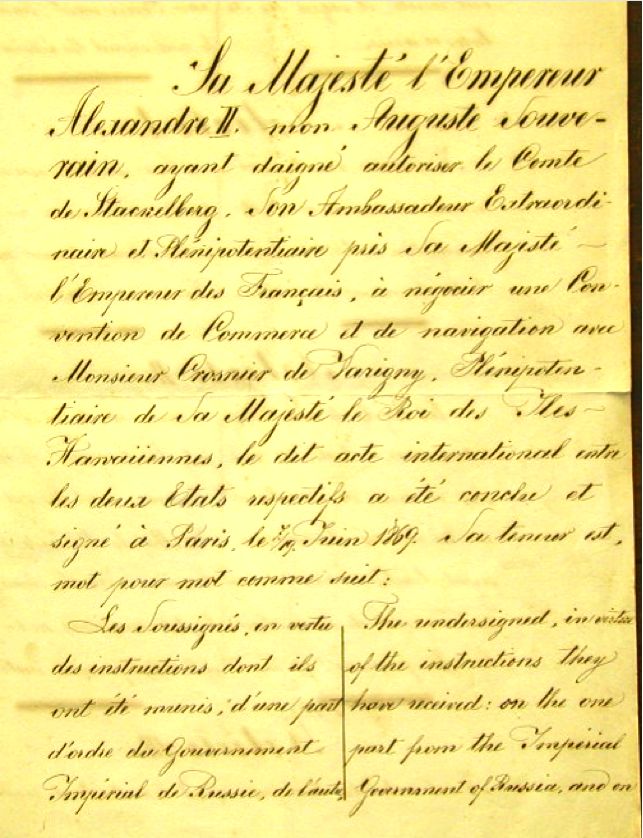On June 19, 1869, a Treaty was signed between Russia and the Hawaiian Kingdom in Paris and thereafter ratified by both governments. Article II of this treaty provides:
“the subjects of His Majesty the Emperor of all the Russias, and the subjects of His Majesty the King of the Hawaiian Islands, shall be treated reciprocally on the footing of the most favored nation.”
Neither Russia nor the Hawaiian Kingdom gave notice to the other of its intention to terminate this treaty in accordance with the principles of customary international law. Therefore, this treaty is still in full force and continues to have legal effect to date. Former Russian territories, which acquired their independence from Russia, are successor States to, at the very least, Article II of the Hawaiian-Russian Treaty with regard to the citizenry of the successor State that effectively replaced the citizenry of the predecessor State in the treaty. These successor States are:
- Armenia. Independence: September 23, 1991.
- Azerbaijan. Independence: August 30, 1991.
- Belarus. Independence: August 25, 1991.
- Estonia. Independence. February 24, 1918.
- Finland. Independence: December 6, 1917.
- Georgia. Independence: April 9, 1991.
- Kazakhstan. Independence: December 6, 1991.
- Kyrgyzstan. Independence: August 31, 1991.
- Latvia. Independence: November 18, 1918.
- Lithuania. Independence: February 16, 1918.
- Poland. Independence: November 11, 1918.
- Republic of Moldova. Independence: August 27, 1991.
- Tajikistan. Independence: September 9, 1991.
- Turkmenistan. Independence: October 27, 1991.
- Ukraine. Independence: August 24, 1991.
- Uzbekistan. Independence: August 31, 1991.

